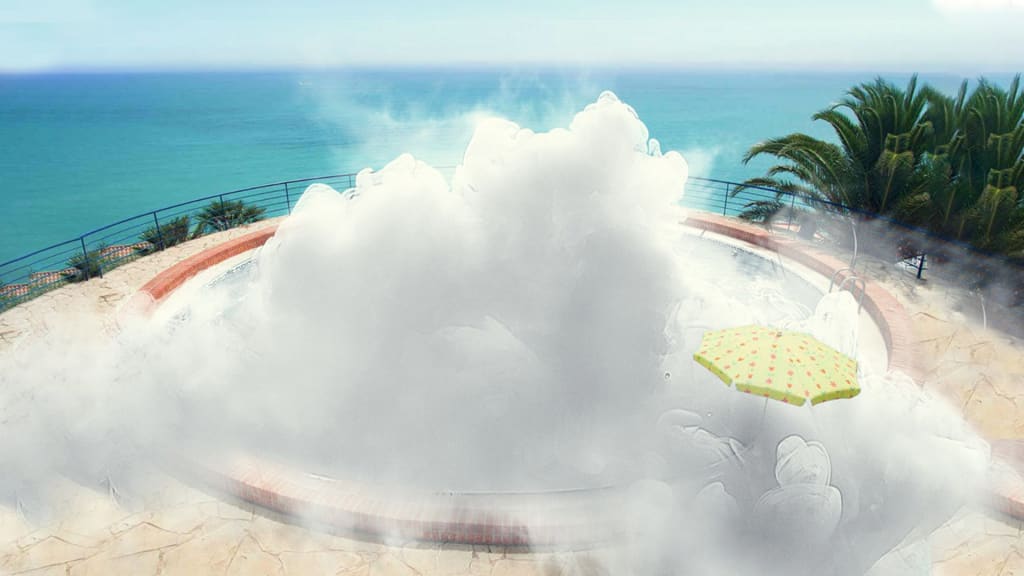What Happens If You Fall Into Liquid Nitrogen?
Any substance that is used to cryogenically preserve a dead body is probably something you want to avoid swallowing. Just ask award-winning science guru Bob McDonald.

Jumping into a pool of liquid nitrogen might sound like an awesome way to cool off when the, uh, mercury is rising, but it’s really a terrible idea that no one should ever attempt.
Unless there’s a rope tied around the waist of the would-be swimmer, rescuing them from their bubbly dip within two seconds. Then they might survive.
Bob McDonald knows this to be true. The host of CBC’s Quirks & Quarks, author, science journalist and recipient of the 2005 McNeil Medal for the Public Awareness of Science from the Royal Society of Canada used to play with the liquid all the time when he worked at the Ontario Science Centre in Toronto.

Once, to impress the infatuated crowd gathered to watch his demonstrations with liquid nitrogen, McDonald put some of the super cold fluid in his mouth, intending to spray it out and wow the group with a bright cloud.
“I was a little careless and one tiny little drop stayed in my throat, and after I spit it out, I went on talking,” he says. “The liquid, when it does turn into gas, it expands by 400 times. Suddenly, it didn’t freeze me, but I got this big bubble of gas in my throat. I wanted to breathe in but it was nitrogen, not oxygen.”
Definitely don’t try that at home, dear readers.
So what is liquid nitrogen, exactly, and how does it do what it does?
Liquid nitrogen is a clear liquid that’s typically kept in special containers to accommodate its “normal” temperature of around -196 degrees Celsius (-320.8 Fahrenheit). It does, however, have lots of bubbles in it, making it look like boiling water.
If someone were to fall into a vat of liquid nitrogen, things would happen pretty quickly.

“You would start to freeze and you’d feel all these needles and pins all over your body,” McDonald says. “You’re getting extreme frostbite. The nitrogen would freeze all the cells on your skin.”
That’s just the beginning. The human body is mostly made up of water, which expands when it freezes. Liquid nitrogen freezing the water in a body’s cells would transform that water into crystals.

“Those crystals would pierce the walls of your cells,” McDonald says. “Your cells would be dying all over your skin and you’d feel that, just billions of needles and pins, and at the same time you’d be under a liquid, like being underwater, so you’re drowning. As the liquid goes into your mouth, you feel the same thing -- needles and pins in your mouth, in your throat, in your lungs. It would be just horrible.”
Within a few minutes, no more than five or so, the person would be dead.
What about the aforementioned tethered dip into a pool of liquid nitrogen?
Surely if putting it in your mouth and then spitting it out immediately is possible, more or less safely, diving into a pool and getting out quickly should be safe, right?
“You could actually dive into a pool if you had a rope around you and somebody was holding on to the end of the rope,” McDonald agrees. “As soon as you dove in, they would pull you back out within two seconds. Theoretically, you could survive that. I wouldn’t try it.”
Jumping into a pool of liquid nitrogen is not a great idea. Putting liquid nitrogen into someone’s mouth is not a good idea.
What is cryogenic freezing?
But liquid nitrogen is also what’s used in some cryogenic preservation practices. McDonald notes that Walt Disney is said to be submerged in the stuff to be revived at some point in the future where he can be cured of what killed him.
What if someone were to take a cryogenically preserved body, carefully frozen so that there are no bubbles inside the body to cause those painful crystals after “awakening,” and felt the need to throw something solid, like a brick at the body?
What if, in other words, someone tried to re-enact the scene from “Terminator 2: Judgment Day,” throwing a brick at the body of some bad person? Would the body actually explode? This has been a favorite example of science classes for years, with frozen bananas often being sacrificed in the name of science. Is it real?

McDonald confirms the movie magic is real.
“You would have a big block of ice in the shape of a human because we’re mostly made of water,” he says. “You could grab an arm and you could snap it off. You could break them into tiny little pieces. It would be like that. I don’t recommend it.”
Liquid nitrogen is a marvel. Doctors may use it to freeze blemishes off our skin, but that’s probably as close as we should get to it — unless you want to become a shattered popsicle of a person. Watch what it would be like in our What If episode:







Comments
There are no comments for this story
Be the first to respond and start the conversation.